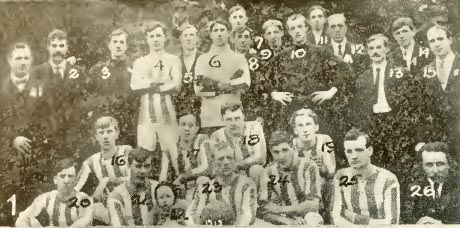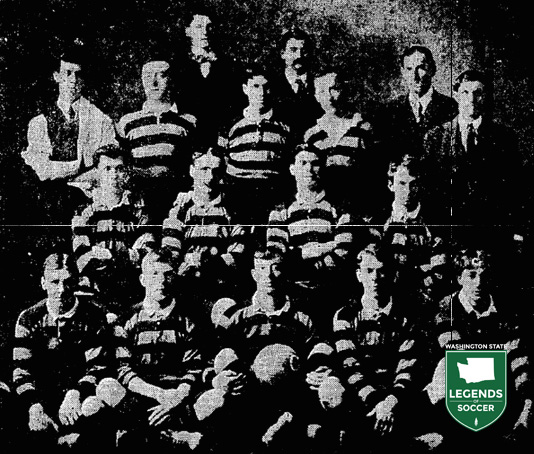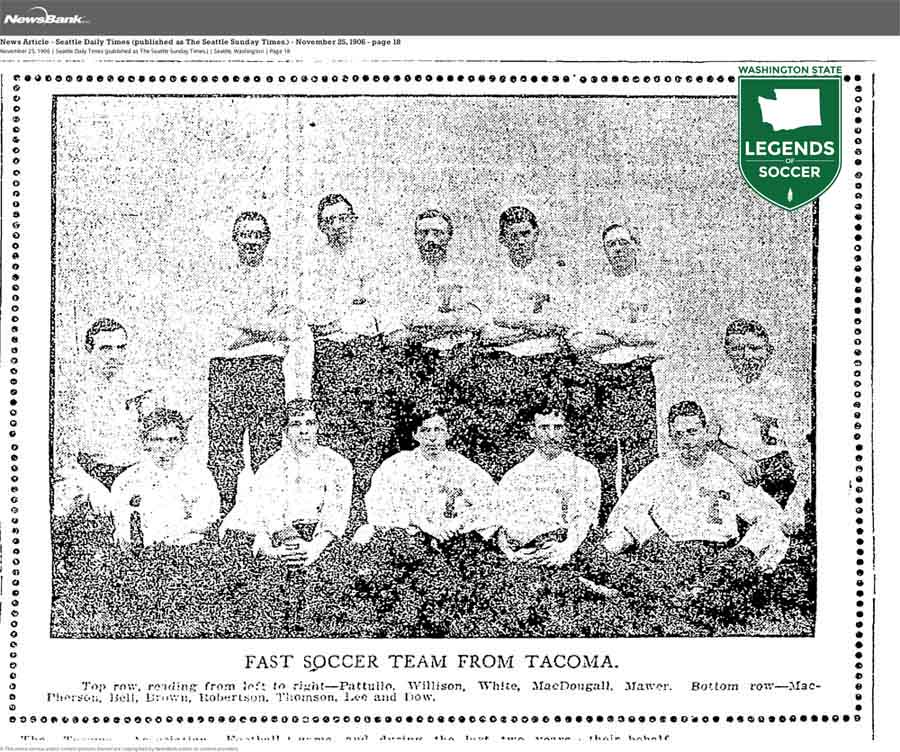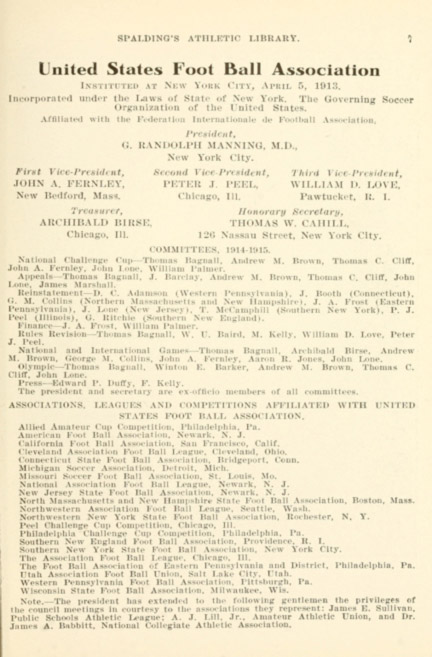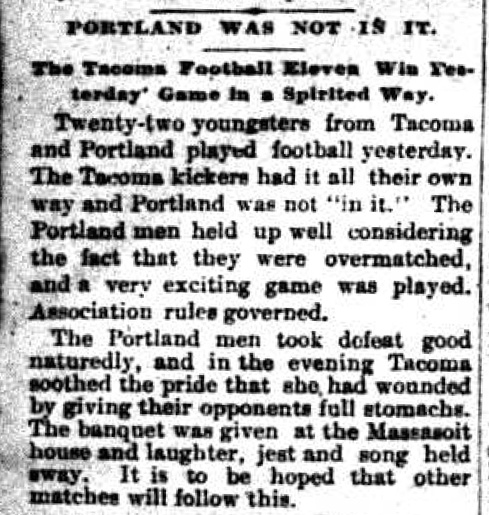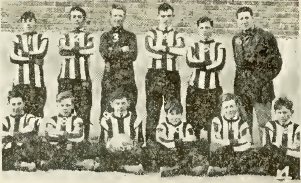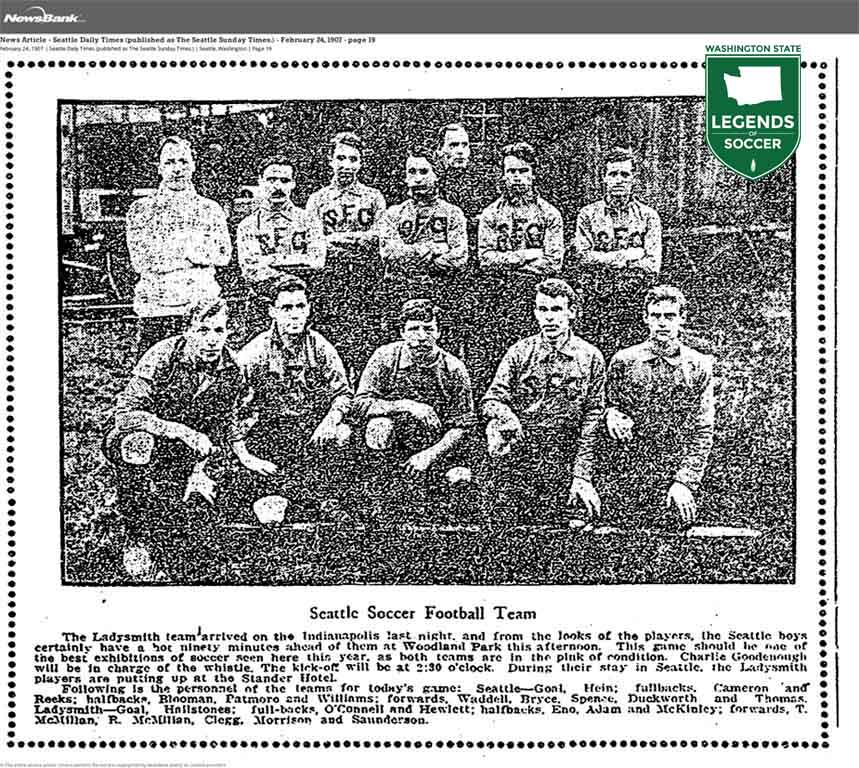When it first arrived in this faraway corner of the Union, it was simply known as football or, in a publication’s initial reference, association football. It was the sport of immigrants, and during 1880s immigrants were among the tens of thousands pouring into the territory and, by November 1889, the newly admitted State of Washington. During that decade alone, the state population grew by nearly five-fold (most of it in the final five years of the century), and in the next 20 years it would triple again.
Western Washington was densely forested and rich coal reserves had been discovered on the Cascade foothills, and, whether it was the timber or mining industries, workers were in great demand. By 1900, 20 percent of the state population was foreign-born, over half from northern Europe, where association football had taken root. Black Diamond Mining Co., founded in 1884 in the southeastern King County foothills, featured a workforce of mainly Irish, Welsh and Italian heritage. Awaiting them was a local sporting culture of gridiron football, baseball and horse racing. Cleaving to what they knew, the immigrants brought association football, a game associated with Europe’s working class.
Those laboring in mining and lumber had dangerous jobs and little free time a typical work week was six 10-hour-days. Yet they thoroughly enjoyed competing, the game was growing throughout Cascadia, and beyond picking teams for after-work games, it was common to challenge other work camps and neighboring towns to a match.
The first published word of association football surfaced in 1890, both in rural Washington and urbanized Puget Sound. A spring team had formed in the southwestern logging community of Chehalis, and a Christmas Day match was played at Tacoma’s baseball park versus a side from Portland. By 1893, transcontinental rail service and association football had reached Seattle, where a challenge match against Everett took place on the shores of Lake Washington, at Madison Park.
With precious little recreation time and challenging travel conditions throughout the region, regular intercity play was not possible at first. Seattle Association Football Club (AFC) sailed up to Vancouver Island in May 1894 only to be humbled by British Columbia champion Victoria Wanderers, 5-1, for unofficial bragging rights of Cascadia.
Thanks to generous donors, prestigious prizes were at stake. In 1894, the Great Northern Railway donates “at great expense” a silver challenge cup as a prize for teams to compete throughout Washington and Oregon. In 1899, more silverware was donated by Thomas Lippy to winner of the state championship, to be settled on Thanksgiving Day. A second Seattle club, Thistles, was formed and by 1905 they were joined by Wanderers, soldiers from Fort Lawton and millworkers from Port Blakeley, on the eastern side of the Sound. It was sufficient to form the Northwestern Association Football League, which would feature six charter members, including Tacoma, opens in January 1906. Lumberman Jack McMillan’s trophy was the most recognizable. The McMillan Cup was presented to winners of several different competitions over a span of 35 years (1913-1948).
There was good reason to be optimistic about the game taking hold. Big matches had moved from Madison Park to Woodland Park, which was served by a trolley line. The City of Seattle had purchased the park from Guy Phinney in 1899. Five years later, the Olmsted Brothers-designed park, featuring a zoo, opened. An athletic field was situated at the park’s southwest corner and known as Upper Woodland. Crowds were soon flocking to the field an estimated 2,000 watched Wanders and Thistles play in March 1906.
Across the nation and in Washington, the game was getting a new name to better distinguish itself from American football after initially spelling it ‘socker,’ then soccer. Newspapers chronicled league play, major friendlies and even schoolboy leagues. Quality play was termed ‘fast,’ referees often received marquee billing and occasionally complete lineups were listed, usually prior to the match.
It’s a winter sport, with league play beginning in mid-November, concluding in late February. A knockout tournament follows, keeping each club engaged to the end. Friendlies continued to be played, more often than not on holidays such as Thanksgiving, Christmas, Boxing Day and New Year’s Day. Those would involve either established clubs or picked (all-star) sides meeting Canadian counterparts. By 1908, in addition to the Northwestern League, a picked team, Seattle United, was admitted to the B.C.-based Pacific Coast City League and holds it own (2-2-1). Ultimately, however, the costs of added travel are too much to bear they do not return for a second season.
Improved transportation makes local travel much more practical, however, allowing the miners from Black Diamond, Carbonado and Renton to join – and dominate – the league, which grows to 10 members for the first time, in 1913. The economy, with logging once more prosperous, is strong and interest is widespread. In the southwest corner of the state, communities and logging camps form a senior league. Youth play is introduced to schools in Seattle (Green Lake, in 1910) and Spokane by 1912, and women seek to play informally around Seattle.
As the state approached its fourth decade of soccer, the sport was booming but looming was U.S. involvement in the Great War. Since the outbreak of World War I in Europe in 1914, Puget Sound becomes a thriving manufacturing and shipbuilding center. Skinner & Eddy opens the largest shipyard in the Pacific Northwest in 1916, and by 1918 there are 13 yards launching steel- and wood-hulled vessels. Five shipyards – Skinner & Eddy, Seattle Construction & Dry Drock, Ames, Duthie’s, Todd and North Pacific – form teams and join the league, and during the war years the power shifts to from the hills to the docks.
These are heady times. A booming wartime economy, automobiles beginning to shrink the distances between communities and, for soccer, seemingly endless possibilities. Alas, the Twenties would begin with a whimper rather than a roar.
